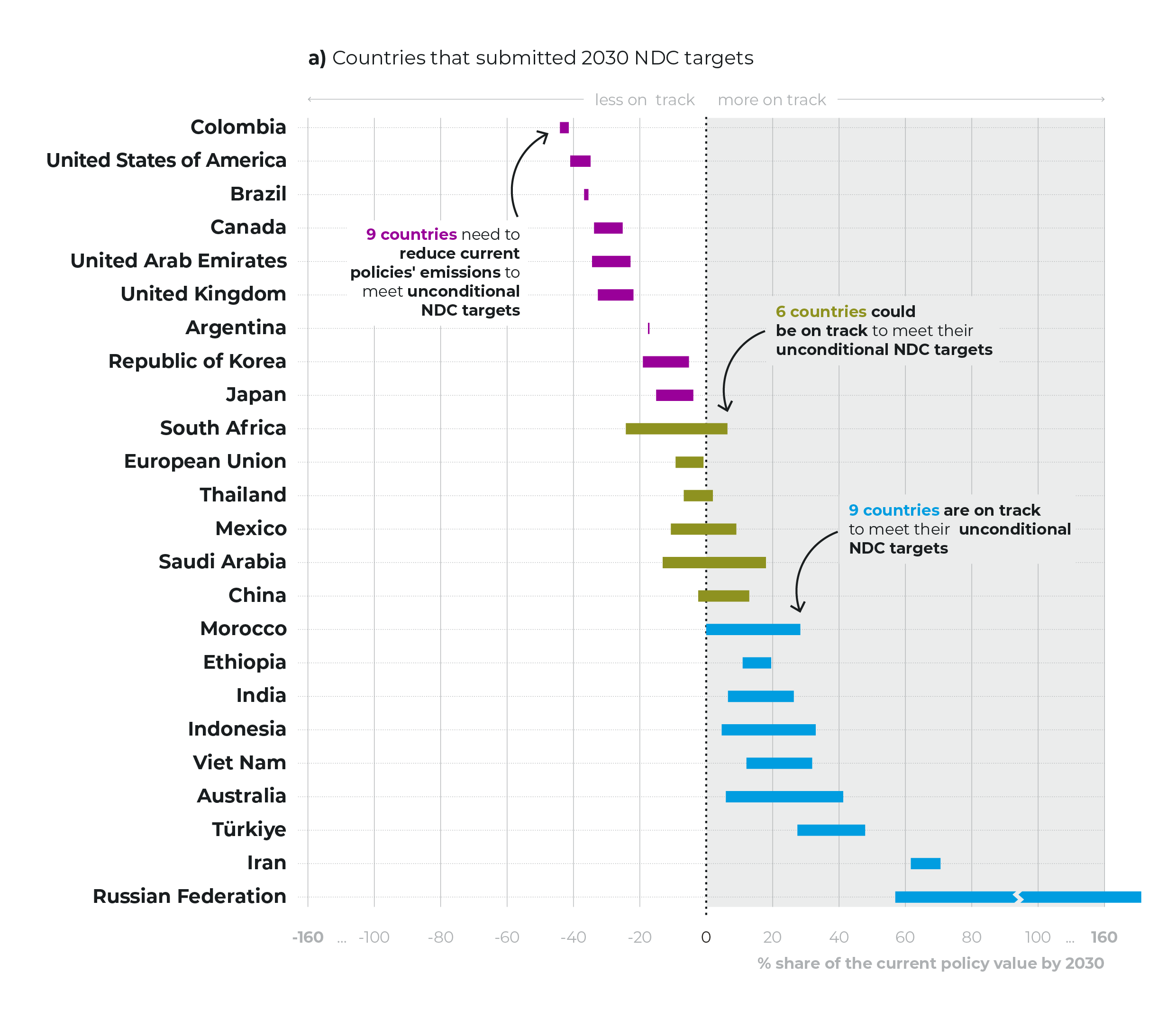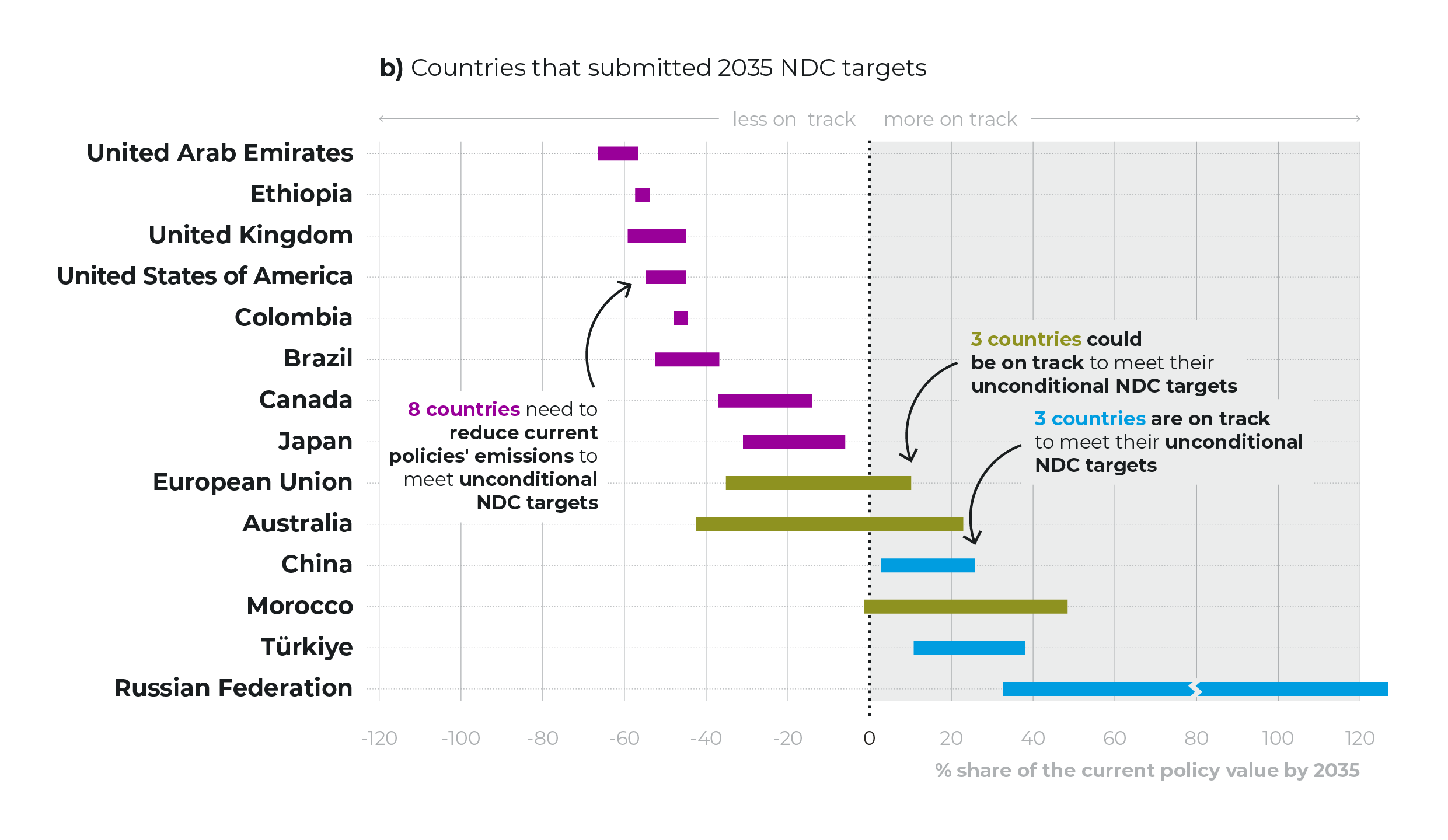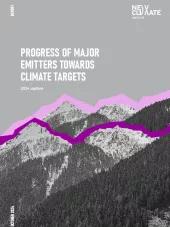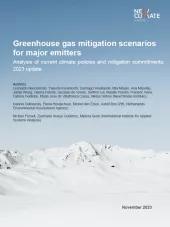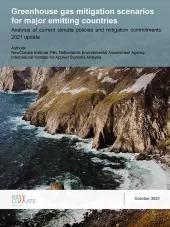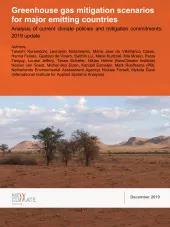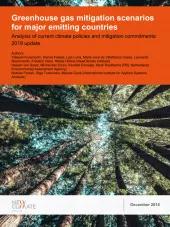2025 is an important year for climate action, with Parties needing to submit their new 2035 NDCs, ideally including more ambitious targets and measures.
To guide efforts in ensuring that countries are on track to achieve the climate goal of the Paris Agreement, we annually evaluate the progress of 25 major emitters, which collectively cover more than 80% of global emissions, towards their climate change mitigation targets.
As in previous reports, we create two main scenarios: the current policies scenario, which reflects countries’ policies and measures as of July 2025, and the NDC scenario, which reflects countries’ latest NDC submissions as of mid-October 2025.
GHG emissions of the countries assessed may peak before 2030, but not fast enough to meet the climate goals of the Paris Agreement
Our analysis shows that total emissions under current policies could peak by 2026 at around 39.5 GtCO2e. We project that by 2030, aggregated emissions for the 25 countries we assess will reach 36.3 to 40.1 GtCO2e, with the lower end of the range approximately 1.5 GtCO2e higher than in last year’s report – mostly because of rollbacks of policies and regulations in the US. This reduction ranging from -6% to +4% compared to 2019 levels, remains insufficient to limit global warming to 1.5°C, which requires 43% emissions reduction over the same period.
By 2035, however, while the upper range sees only a modest decline in emissions, our lower end of projections declines at a much higher rate: emissions under current policies are projected to reach 32.8 to 39.1 GtCO2e.
Projections remain on a downward trend, despite a decrease in the US emission reduction rate
Emissions are projected to decrease or stabilise in 15 out of the 25 countries analysed between 2021 and 2035, despite a decrease in the US emission reduction rate. For China, emissions are projected to decrease between 2021 and 2035, following a peak around 2025 and a period of stabilising emissions up to 2030. In the United States, rollbacks on almost all IRA programs and several EPA regulations have led to higher emissions projections compared to last year.
Fig. 1: Overview of emissions projections (including land use) under current policies - Colours indicate the emissions trend between 2021 and 2035.
Progress towards 2030 and 2035 NDC targets needs to be improved
Based on our latest projections, fifteen countries are likely on track to meet their unconditional 2030 NDC targets. Nine of these countries are clearly on track since they have the full range of the current policy scenario below the unconditional NDC target (in blue in Figure 2a). This is true for Iran, Viet Nam, the Russian Federation, India, Indonesia, Türkiye, Morocco, Ethiopia and Australia. These countries are projected to meet their unconditional targets without adopting additional policies — although they still need to implement the ones already in place. These countries are well-positioned to substantially enhance their unconditional NDC targets and help close the global ambition gap.
Six additional countries could be on track as they have part of their current policies scenario range fall below their 2030 unconditional NDC target (in yellow in Figure 2a) — China, South Africa, the EU, Mexico, Thailand and Saudi Arabia.
Nine countries are off track to meet their unconditional NDC targets (in purple in Figure 3a). In these countries, the full range of emissions projected in the current policies scenario is higher than their unconditional NDC target. This is the case in Colombia, Brazil, the United Kingdom, Canada, the Republic of Korea, Argentina, Japan, the United Arab Emirates and the USA. These countries face a national implementation gap and need to adopt additional policies or substantially strengthen existing ones to meet their unconditional NDC targets for 2030.
From the 25 countries we analyse, fourteen countries have submitted or announced a 2035 NDC target (as of 15 October 2025). Our projections indicate that eight are off track to meet said targets (in purple in Figure 2b). This is the case for Canada, Brazil, Colombia, Ethiopia, Japan, the USA, the United Arab Emirates and the United Kingdom, as the full range of their emissions projections under current policies is higher than their 2035 unconditional NDC target. Australia, the EU and Morocco could be on track to meet their unconditional NDC targets, if emissions follow the lower end of our current policies scenario (in yellow in Figure 2b). For Australia, any uncertainties in the current policies scenario are partly driven by policies adopted at different governance levels, particularly those adopted by different subnational territories.
Given the urgency of the climate crisis, each country has a critical role to play. Countries projected to meet their NDCs are well-positioned to enhance their targets and help close the global ambition gap. Countries projected to fall short of their unconditional NDCs should prioritise adopting additional policies or rigorously implementing existing ones to ensure they meet their targets and contribute to closing the global implementation gap between current policies and countries' NDCs.
Fig. 2: Comparison of economy-wide emissions projections under current policies and unconditional NDC targets in 2030 and 2035 for all 25 countries, except Egypt which only has a conditional target - The percentages are calculated by comparing the full range of the NDC target and current policies scenarios and presented as a share of the current policy value in 2030 and 2035.
About the project:
This project, led by PBL Netherlands Environmental Assessment Agency, informs the Directorate General Climate Action (DG CLIMA) of the European Commission on developments in the field of climate policies. Together with PBL and International Institute for Applied Systems Analysis (IIASA), we provide analyses on the progress of major emitting countries towards their mitigation targets and on various enhanced action scenarios to fill the emissions gap between likely emissions pathways and the pathways consistent with the Paris Agreement’s long-term temperature goal.


